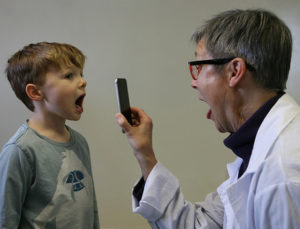 I take particular interest in solutions that blend mobile, data, and care pathways to improve health outcomes. The best solutions aren’t about the technology, but about how they mesh with and improve the care pathway as part of a system of engagement.
I take particular interest in solutions that blend mobile, data, and care pathways to improve health outcomes. The best solutions aren’t about the technology, but about how they mesh with and improve the care pathway as part of a system of engagement.
The future of healthcare is high-touch, through properly designed software, data, and devices that allow caregivers in these systems of engagement to provide high-value interactions, with optimal cost and outcomes. User-centric design, understanding the care pathway, and not being fixated on technological wonders* are all key to provide something useful to caregivers and patients.
Some recent articles illustrate these ideas.
Health coaching, with something extra
Diabetes is one of the Big Three chronic conditions that everyone is trying to tackle. Studies have shown that technologically-mediated programs had the greatest success in helping diabetics control their conditions. And, also, having a way to digitize the engagement process helps iterate improvements and better track engagement and outcomes (a shocking revelation to healthcare folks, I suppose, but one that web-heads have known for years).
Health coaching with a technology platform makes it easier to track results over time, and can help identify the long-term improvements in health outcomes that everyone in the health care industry is striving to achieve.
Source: Health coaching goes high-tech, allowing for better disease management
Another study showed that by adding a telemedicine component to a diabetic retinopathy screening program increased screening rates and reduced clinic visits. This is a great example of augmenting the system of engagement: the telemedicine component allowed an existing screening program to expand its reach, using the same underlying system of engagement.
A third study, this one for post-surgery follow up, showed that adding a mobile app, which uses patient-provided photos and questionnaires to track recovery, had no adverse impact on complication rates. The app also increased communication between patient and care team, led to greater patient satisfaction, and reduced in-person visits.
“Improving patient convenience without compromising satisfaction is another critical finding as we look for ways to build a patient-centric healthcare system that supports quicker recovery and resumption of normal daily living.”
Source: Study: App-based visits seem viable for post-surgical follow-ups | MobiHealthNews
Patient-centric design
I was pleased to see that CMS recently released its patient and family engagement strategy. The strategy not only pulls in the awareness of the patient as part of a care pathway, but also folds in patient communication (Awareness), literacy (Fluency), and preferences (the patient’s own healthcare Strategy, so to speak).
Person and family engagement goes beyond informed consent. It is about proactive communication and partnered decision-making between healthcare providers and patients, families, and caregivers. It is about building a care relationship that is based on trust and inclusion of individual values and beliefs.
Source: Personal and Family Engagement Strategy Summary – CMS
Indeed, understanding patient literacy and preferences might be a way to increase patient engagement and perhaps even help optimize medication adherence.
Evidence increasingly demonstrates that adopting a person-centered approach for medication use that incorporates patient beliefs, preferences, goals, and barriers to medication-taking (e.g., cost, technological ability, concerns about medication prescribing and use) leads to better clinical outcomes.
Source: Engaging Patients to Optimize Medication Adherence – NEJM Catalyst
This is why focusing on some shiny technology can be problematic. As the authors of the NEJM article suggest, understanding the barriers and challenges to help patient engage and reach a successful outcome should be part of a toolbox of approache tailored to the patient’s stage of adherence to care.
Indeed, in a fine example everyone should understand, blending clinical checklists, say discharge instructions, with patient education and patient engagement in a digital format can drive better outcomes. This melds the clinical expertise of a care pathway, with best practices in improving patient health literacy and keeping patients engaged. This is high-touch medicine.
Advancements in personal technology and the growth and availability of mobile devices have created new opportunities for hospitals to blend their checklist strategy with patient education and outreach in ways that engage patients and families in care delivery and condition management.
Summary
The intersection of mobile, design, and data are transforming healthcare and the way healthcare organizations engage with customers, patients, and families. But we need to not be mesmerized by the technology, and keep in mind, not only the patient’s role in the care pathway and the outcome we wish for them, but also their own preferences and health literacy. And what we offer to help patients must be part of a toolbox of solutions that we can tailor to the patient based on their stage of engagement with their care and health.
Do you have any good examples you can share with me? Are you thinking of how you can augment a system of engagement? How do you include the patient in the design of your solution?
Image from the great Juhan Sonin
*Oh, I have lots of stories of how folks can get enamored with tech and fail to see a simpler solution
1 Comment
Healthcare portals: why is the value of good customer experience hard to articulate financially? | 777labs · May 1, 2017 at 9:58 AM
[…] account customers. Portals don’t work because the human that is at the center of healthcare is not part of the equation. I find it hard to believe that Target, Delta, or Bank of America have any problem articulating […]
Comments are closed.